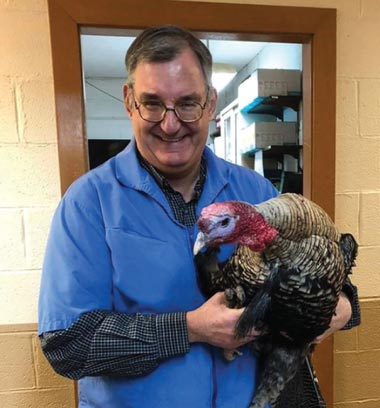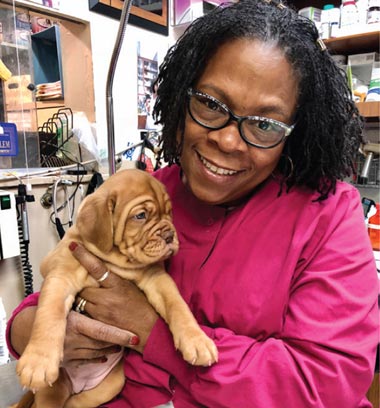
July 01, 2020
Remembering veterinarians who have died during the pandemic
The virus that causes COVID-19 had infected nearly 5 million people around the world and killed about 322,000 as of late May. The virus has left no area untouched, including the veterinary profession. The following stories represent just two of the people who have died during this pandemic. Their obituaries can be found in this issue.
Wildlife, avian veterinarian honored

Dr. Peter Sakas (Illinois ’83), a staff veterinarian at the Animal Hospital and Bird Medical Center in Niles, Illinois, died on March 30 of COVID-19. In his work, he focused on wildlife veterinary medicine. Those who knew him say he was charismatic, had a big personality, and cared deeply for his clients and their animals.
“He had such a loyal following that there were clients who would drive in several hours from out of state just to see him for an appointment,” said his daughter, Courtney Sakas, MD. “My uncle recently shared a story that Elizabeth Taylor once sent her bird in a limousine to my father’s clinic to be seen by him.”
Dr. Courtney Sakas said her father was an active member of the veterinary community. He traveled frequently to conferences, veterinary colleges, and local elementary schools. He had high school students shadow him on Saturdays so they could learn about veterinary medicine firsthand.
Dr. Peter Sakas specialized in avian veterinary medicine. In fact, birds were the whole reason he became a veterinarian. Dr. Sakas found a small, injured bird when he was young and tried to nurture it back to health.
“He carried that same compassion through his entire career,” Dr. Courtney Sakas said. “He often took on cases that others would consider hopeless because he firmly believed that all animals have souls and deserve to be given a chance.”
Dr. Peter Sakas even wrote a book on how to care for birds, “Essentials of Avian Medicine: A Guide for Practitioners.”
Dr. Sakas had no plans to retire. He wanted to keep working. Then he started showing symptoms March 20.
“There has been a lot of attention on human health care front-line workers, but I think people often forget that veterinarians are front-line health care workers too,” Dr. Courtney Sakas said. “My father told us that he was never going to retire because he loved his job so much. I knew he was going to continue working as long as he possibly could to keep caring for the clients and animals he loved, even if it meant putting himself at risk.”
A community-focused veterinarian celebrated

Dr. Julie R. Butler (Cornell ’83), founder of 145th Street Animal Hospital in the Harlem neighborhood of New York City, died on April 4.
She was the only black person in her class, an experience she described as “bittersweet,” according to her sister, Sheila Butler, MD.
In her professional life, Dr. Julie Butler was the kind of veterinarian who never turned away an animal.
Dr. Butler co-founded New York Save Animals in Veterinary Emergency, a nonprofit organization that provides financial assistance for pets that need emergency care. She also served as president of the VMA of New York City. She spent over 30 years serving the Harlem community, and she used her experience to educate and mentor other veterinary professionals.
Dr. Butler was a lifelong student. She loved to expand her knowledge both in veterinary medicine and as an artist.
“It was amazing to see how fast she could acquire a new skill,” said Alex Howard, a chef and Dr. Butler’s son. “She was even beginning to master Thai cooking. … We experimented a lot and created a lot of great meals together.”
Dr. Butler also created felt sculptures, designed clothing, made jewelry, and made an excellent lemon meringue pie.
“For Thanksgiving and New Year’s Day, everybody would wait for the pie to be done so they could enjoy it or maybe even take some home,” Howard said.
Kylie Lang, a veterinary technician, said Dr. Butler was a role model who made work enjoyable.
“Dr. Butler was the kind of veterinarian who cared a great deal about her work and (its) impact on others,” she said.
Lang said Dr. Butler was outspoken and humorous.
“She displayed a rare confidence that took comfort in the unknown,” said Zachary Butler-Jones, her nephew and a veterinary technician. “She would reference necessary texts, make a game plan, and follow through with the procedure, even if she never did it before. That confidence would never spill into arrogance, though, and she made sure to always have her ducks in row when it came to her patients.”